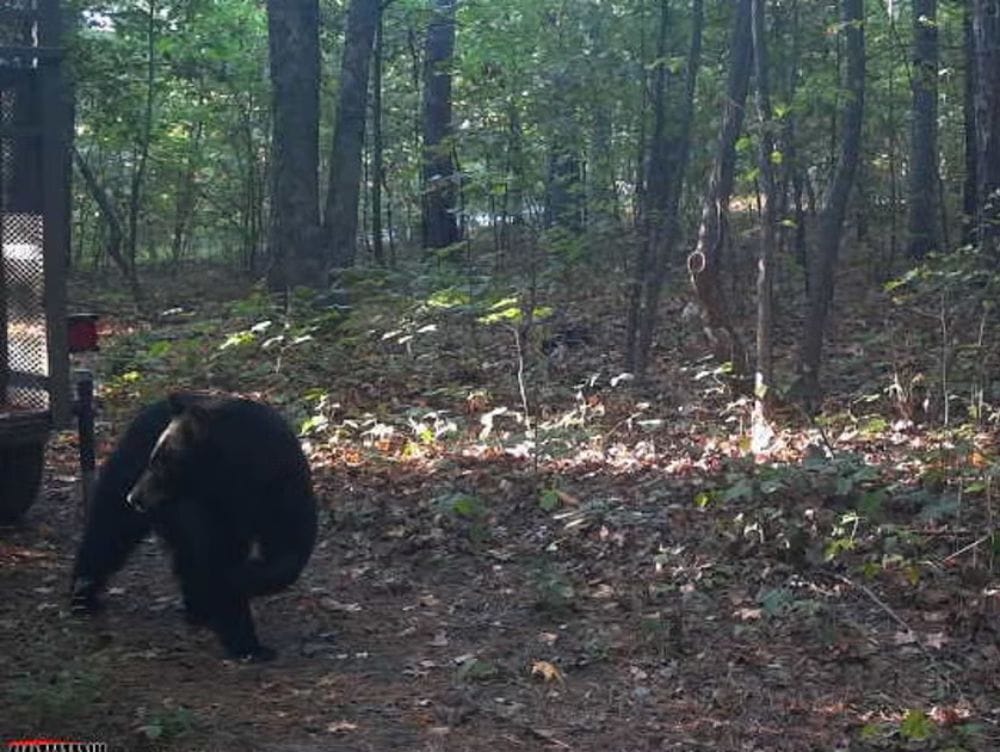
The bear as photographed by the victim
Family members that were undoubtedly waiting on a little closure from a deadly incident earlier this month, now might have to wait a bit longer. According to the Arkansas Game and Fish Commission, the bear they euthanized and believed was responsible for the death of 60-year-old Max Thomas was not the culprit. The incident, which marked the second fatal bear attack in Arkansas in a 30-day span, spurred a multi-agency search that has seemingly, at least up until now, come up empty-handed.
According to reports, camper Max Thomas was alone at his campsite at Sam's Throne Campground in the Ozark National Forest when the attack occurred. Photos he sent to his family shortly before his death captured a young adult black bear sniffing around his campsite and even climbing onto the cot where he slept. When he stopped responding to text messages, his son requested a welfare check. Deputies arrived to find his truck parked nearby, and a campsite showing signs of a violent struggle. The man's body was discovered approximately 180 feet in the surrounding woods showcasing extensive injuries consistent with a large carnivore attack.
The Arkansas Game and Fish Commission swiftly launched an investigation, using Thomas’ photographs, which displayed distinctive facial markings on the bear, to help them identify the attacker. They deployed trail cameras and baited traps, hoping to identify and capture the responsible bear. Within days, cameras spotted a bear that appeared to be a near-perfect match for the one in Thomas’s photos. Convinced they had their suspect, AGFC euthanized the animal to protect public safety and sent DNA samples from both the bear and Thomas’s wounds to the University of Florida for forensic analysis.
However, on Thursday DNA results delivered a stunning blow to the investigative team revealing that the euthanized bear was not, in fact, the attacker. The samples didn’t match, proving the bear that was killed was innocent and indicating that the real culprit still remains at large, leaving investigators frustrated and campers on edge.
“The bear was about the same age, had some same coloration on his face. It looked just like the bear it was in the campground right next to where the attack took place,” Keith Stephens, the Chief Communications Officer for the Arkansas Game and Fish Commission, said. “You know, everything was pointing towards that this was the bear, and it's the only bear that we've got a picture of in that area. And we've got several cameras and several traps, and we haven't been able to catch anything else.”
As of right now, the AGFC is ramping up its search for the true attacker. Trail cameras and traps are set to remain active at the campground, but officials are going on with very little evidence of other bears in the area.
“So, from here, we're going to continue to keep our cameras at the campground. We've also got our traps set up there. We just rebated them again last week. Hopefully, we can get something, you know, on camera or in the traps. We haven't. That's the only bear that has come back to the campground, which is really odd, and that's really the reason why we thought that was probably the bear,” Stephens said.
The AGFC’s ongoing efforts aim to ensure safety while seeking a bit of closure for the Thomas family, but for now, the bear responsible for Arkansas’s second fatal attack in over a century remains at large. The agency is urging campers to stay vigilant and to report any and all sightings immediately.

